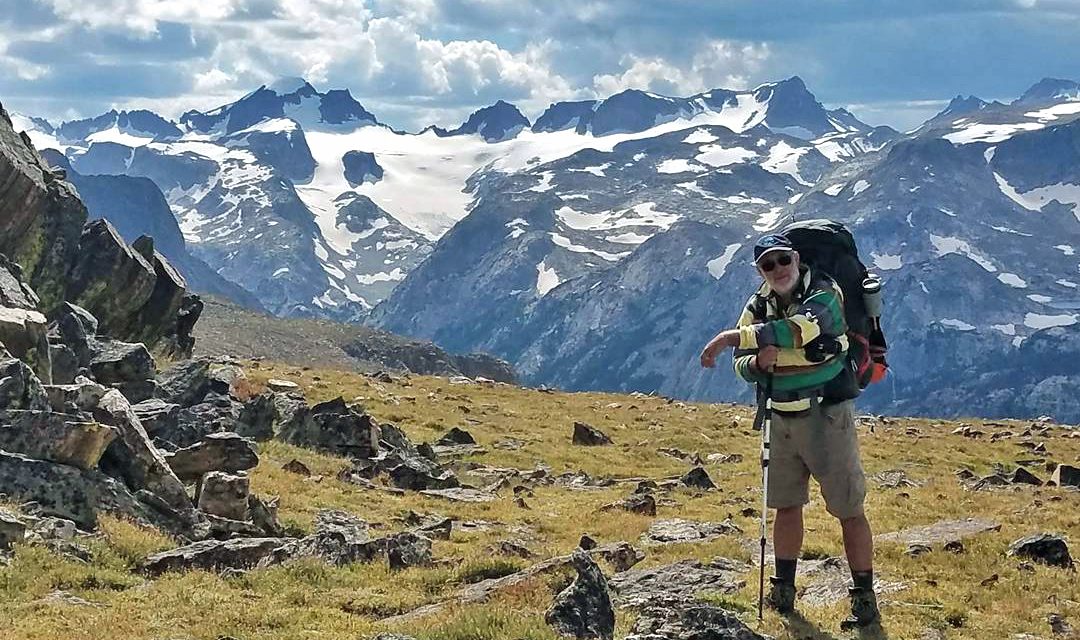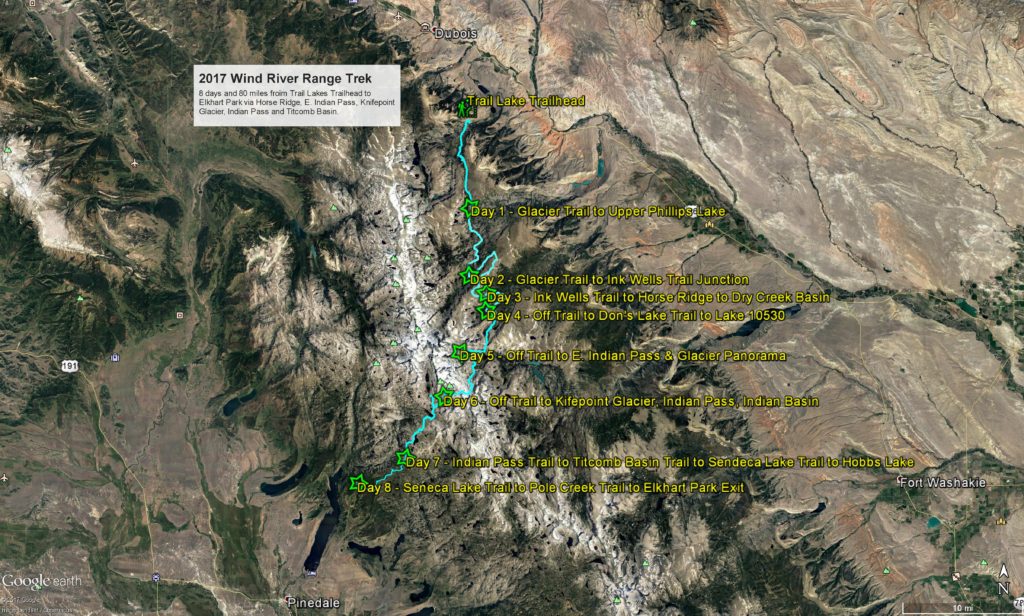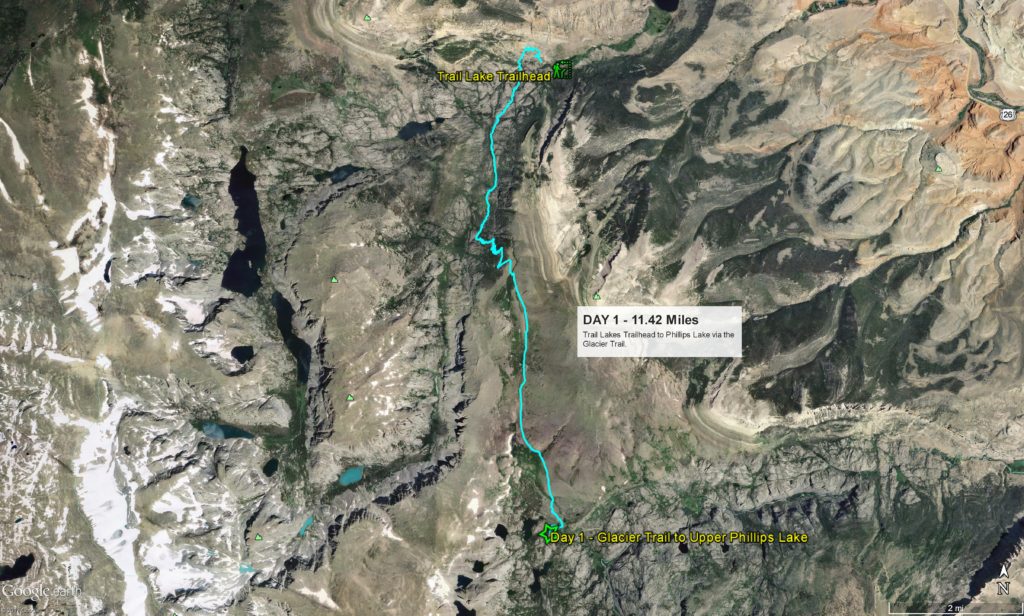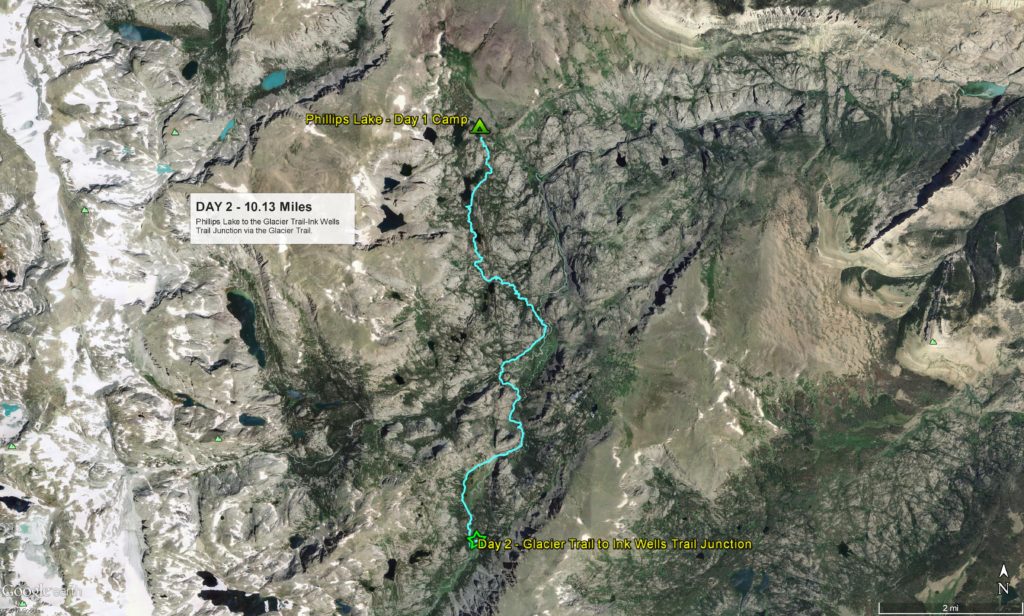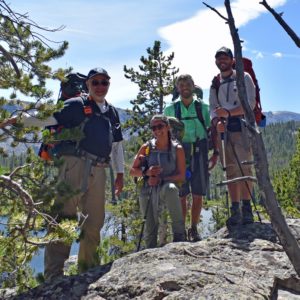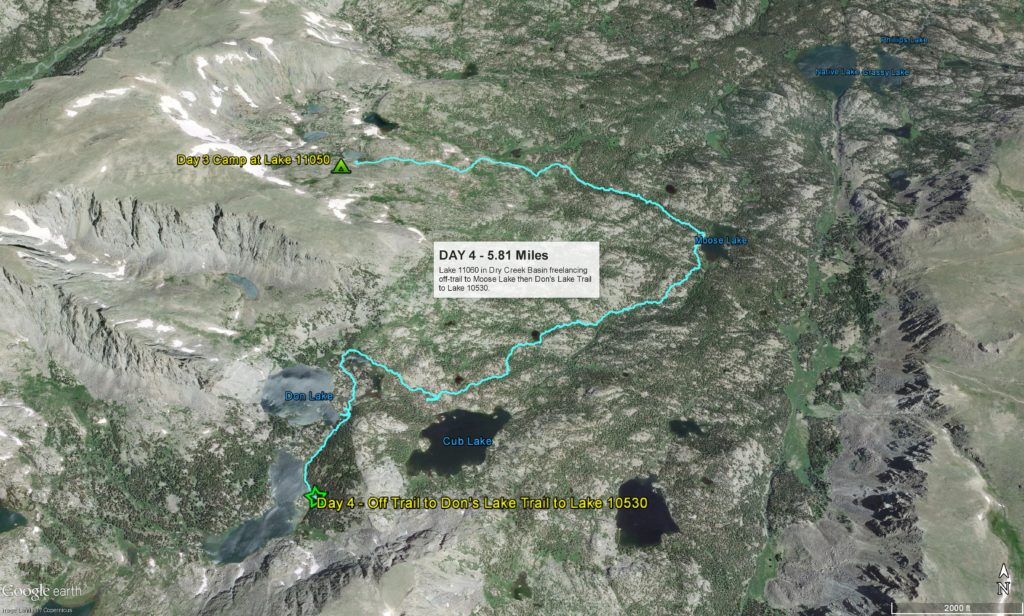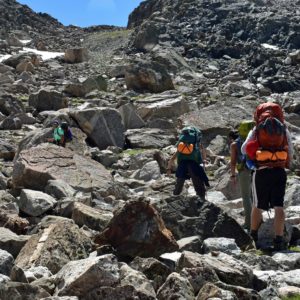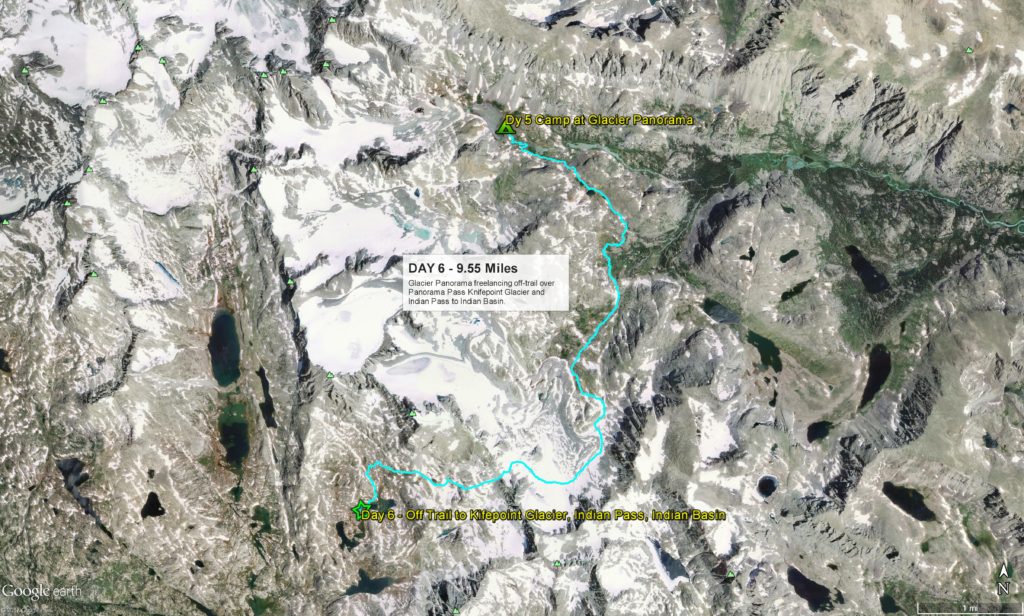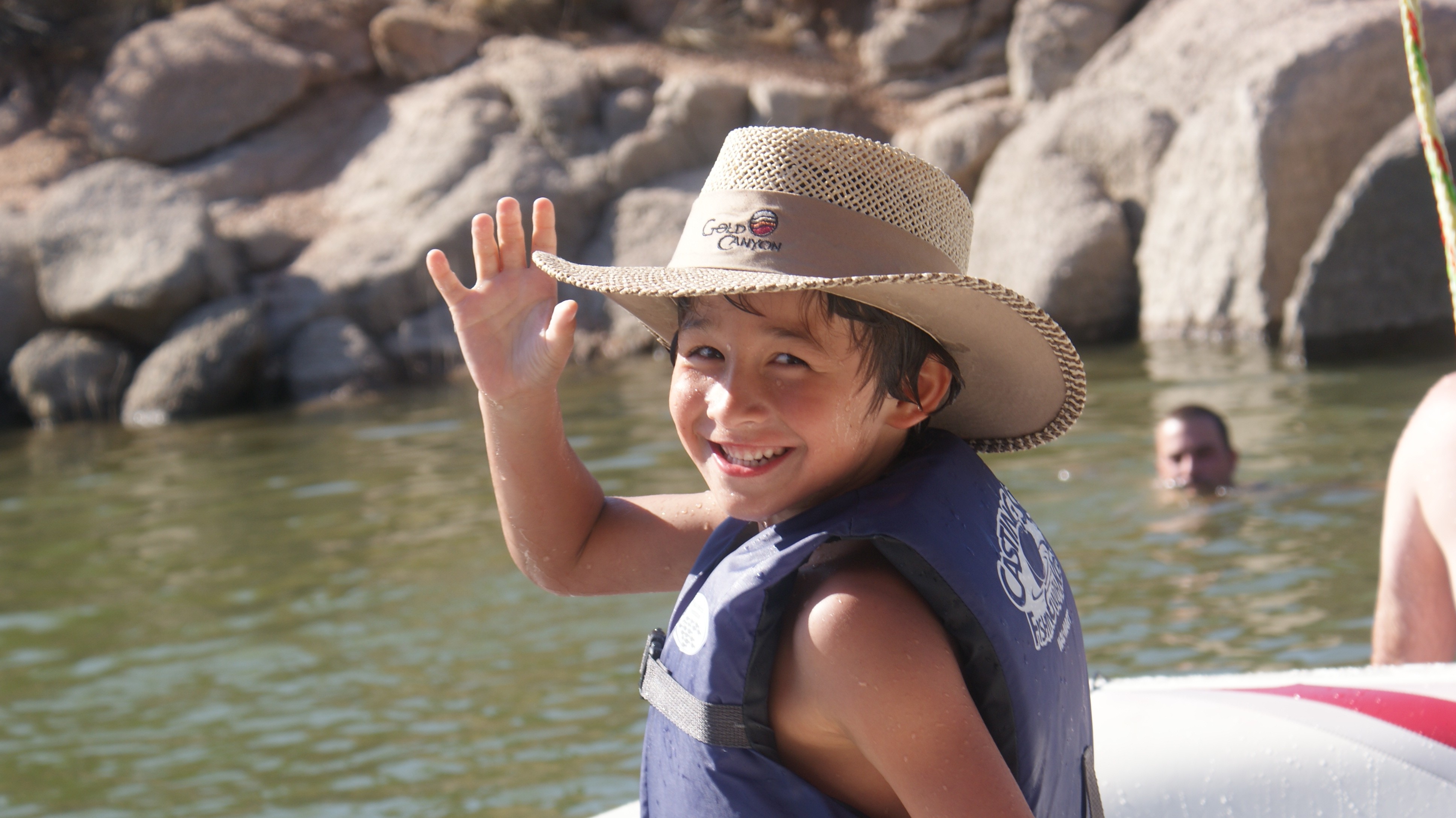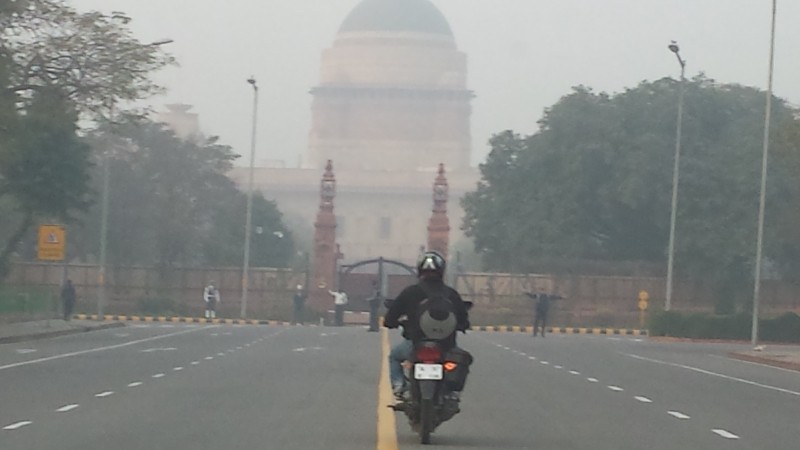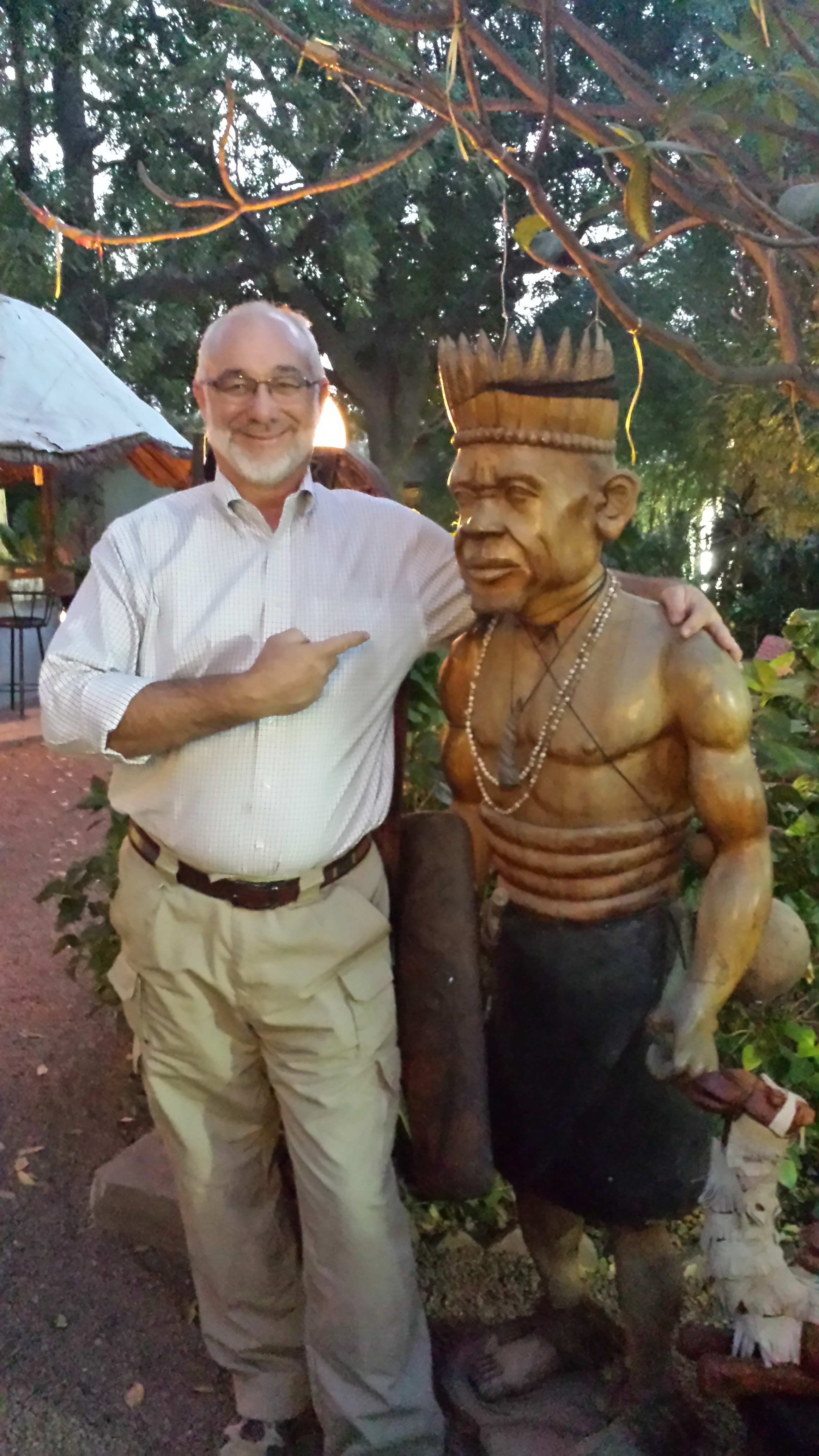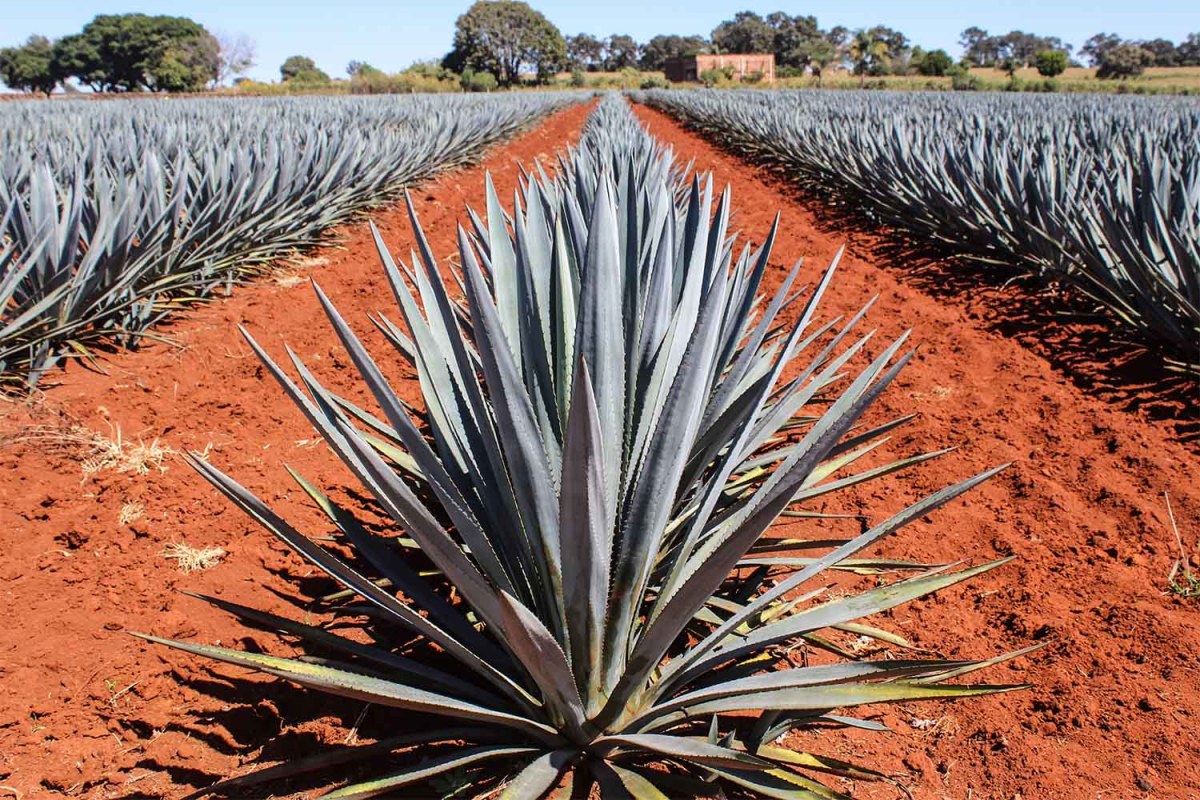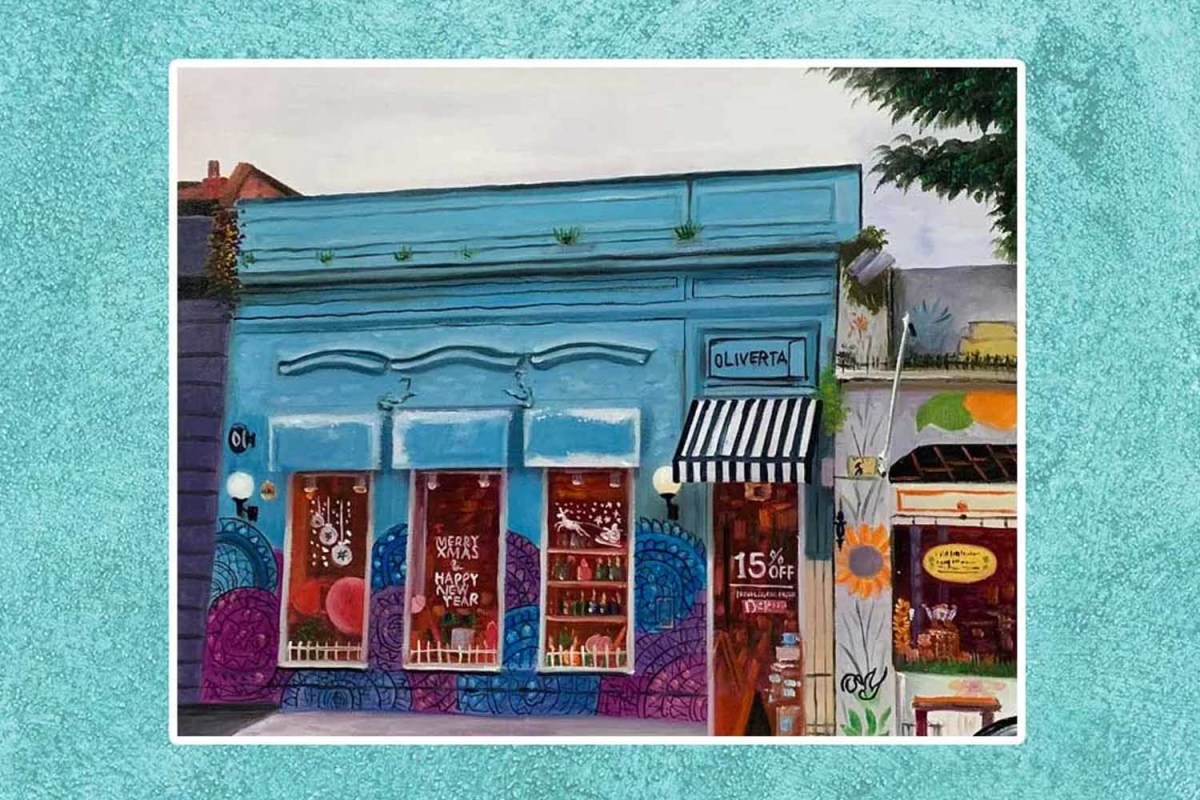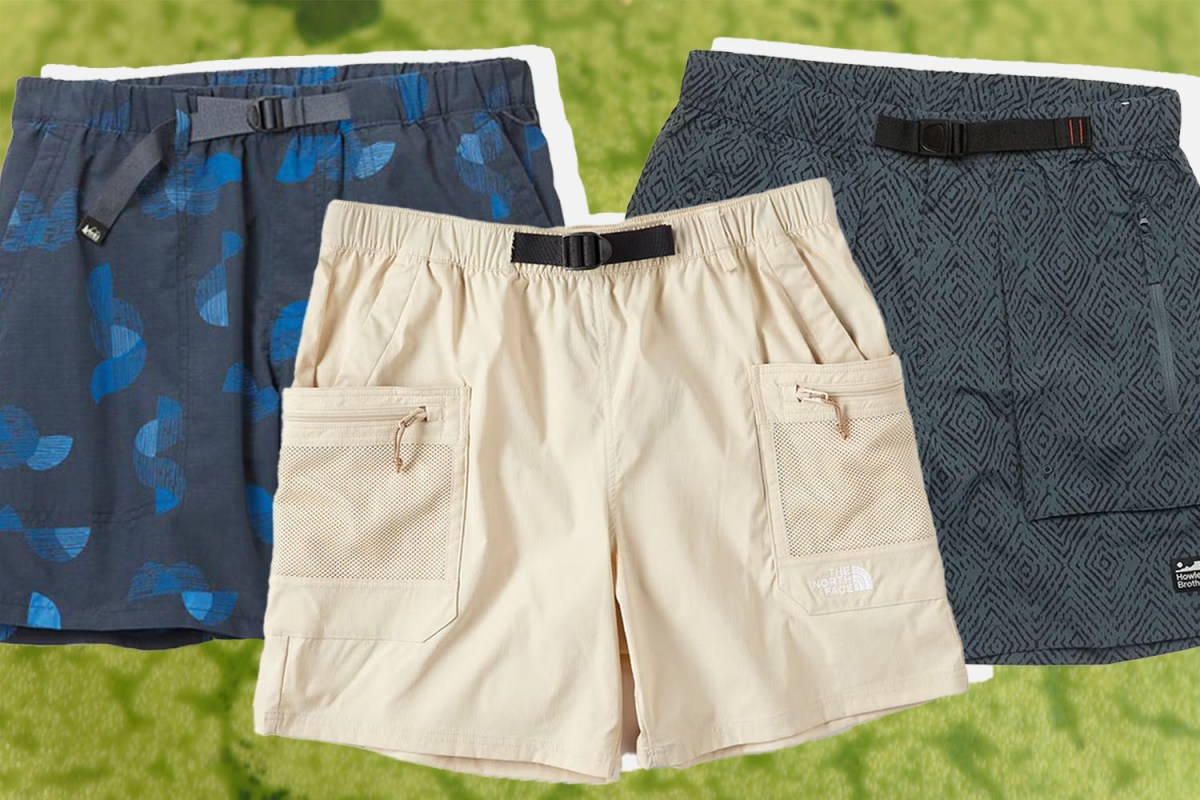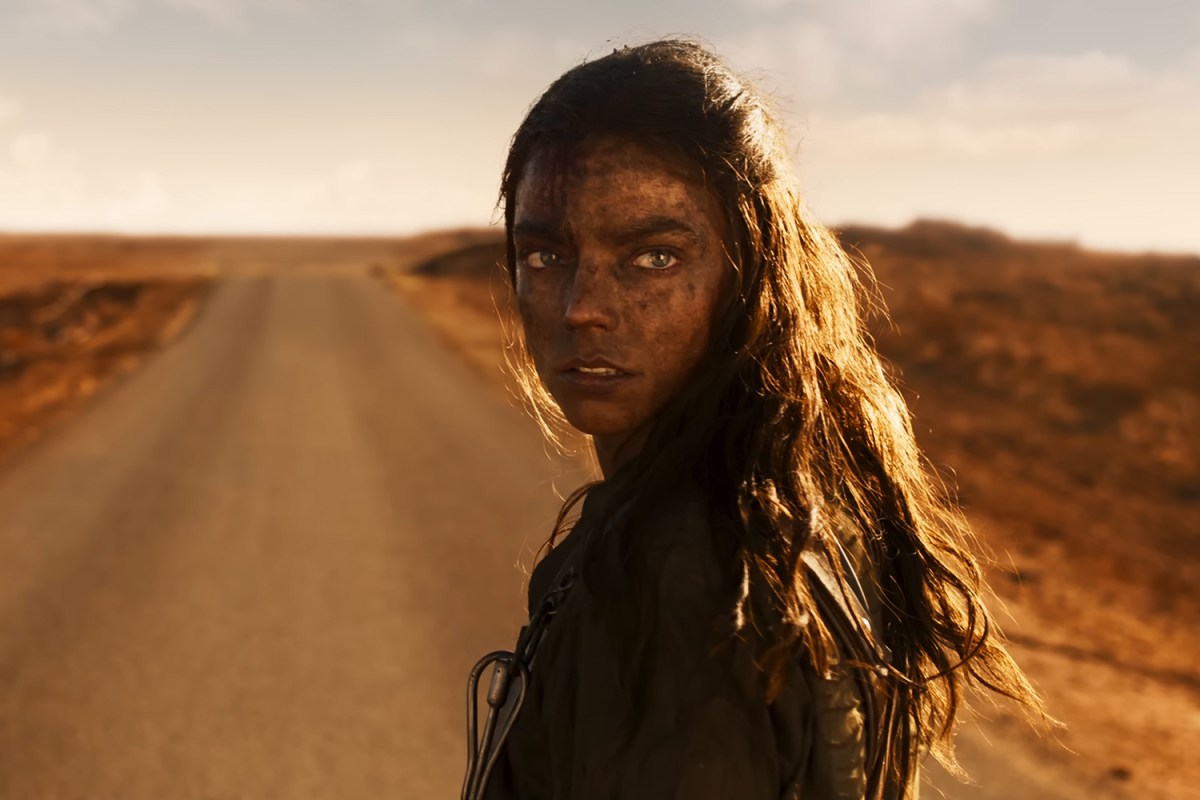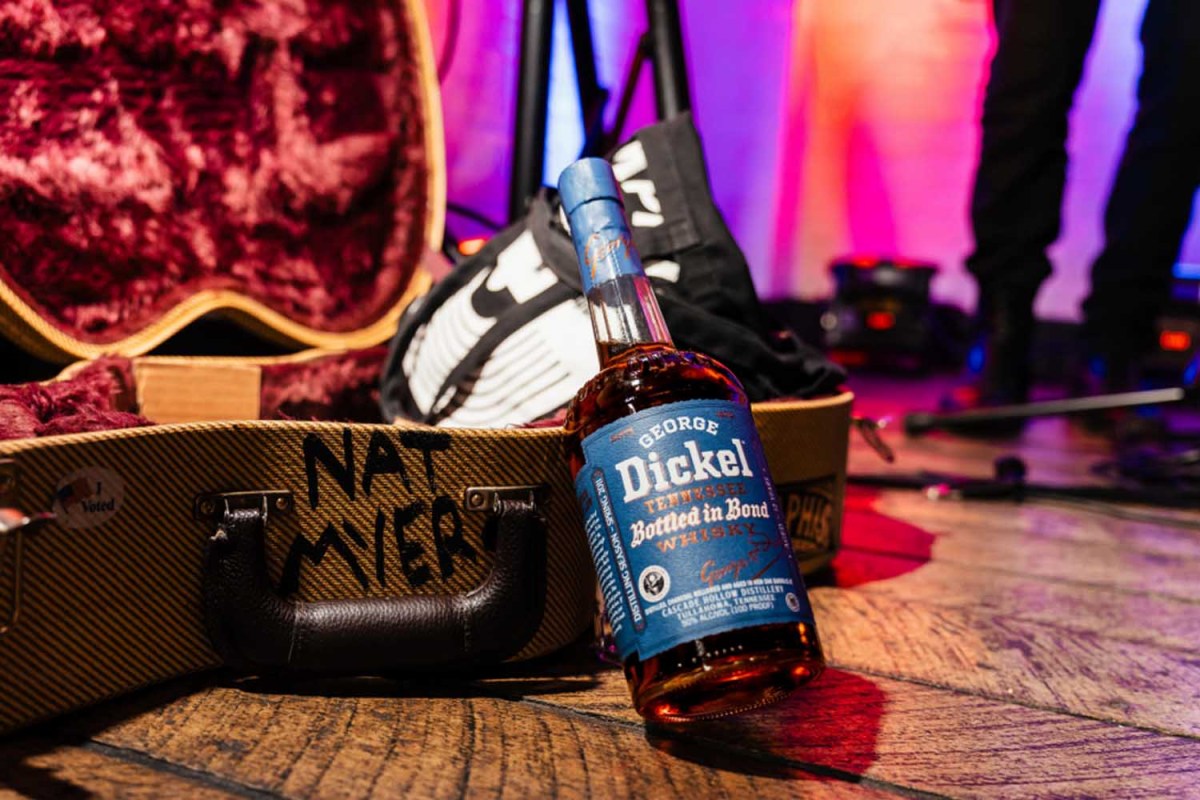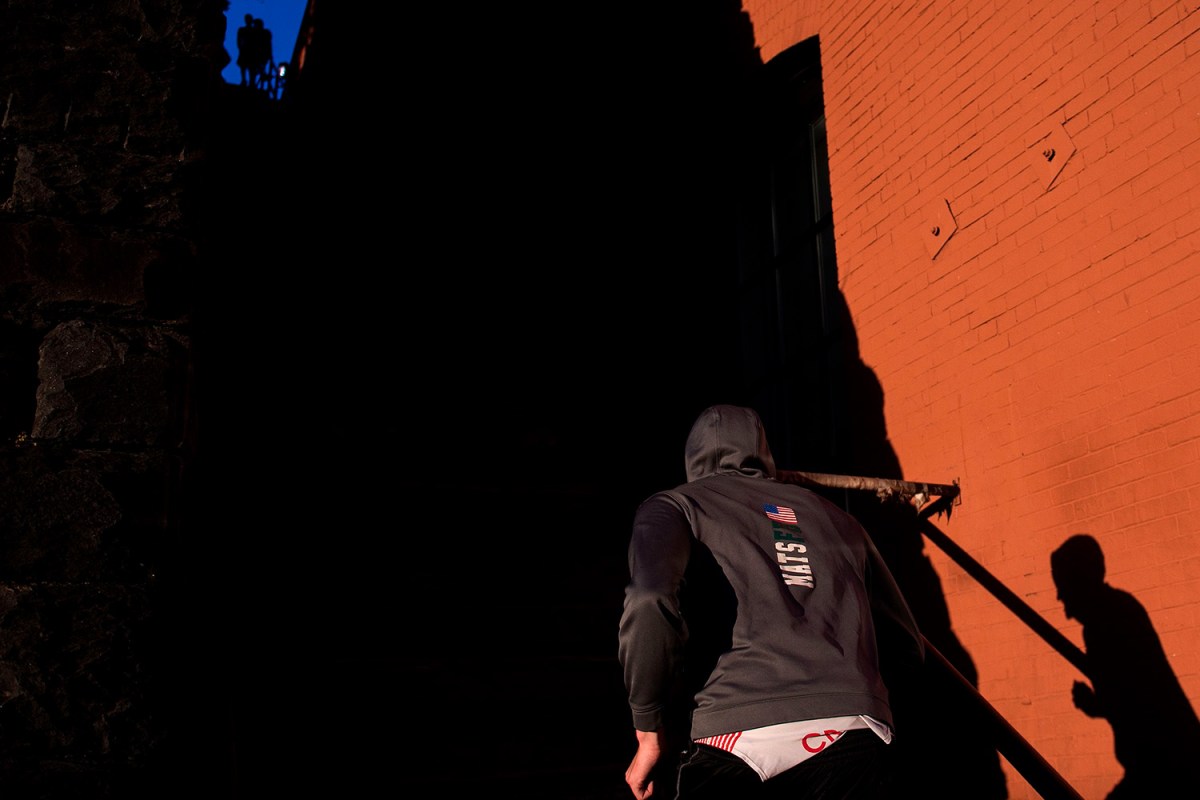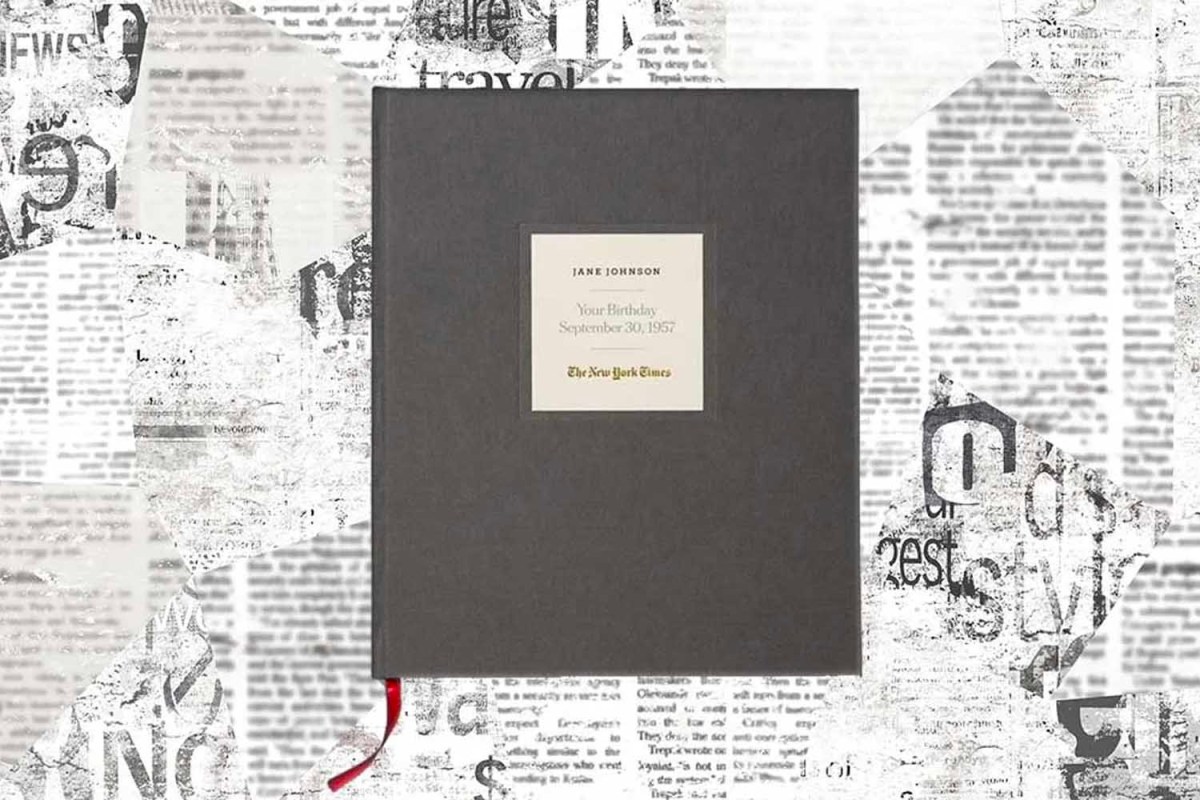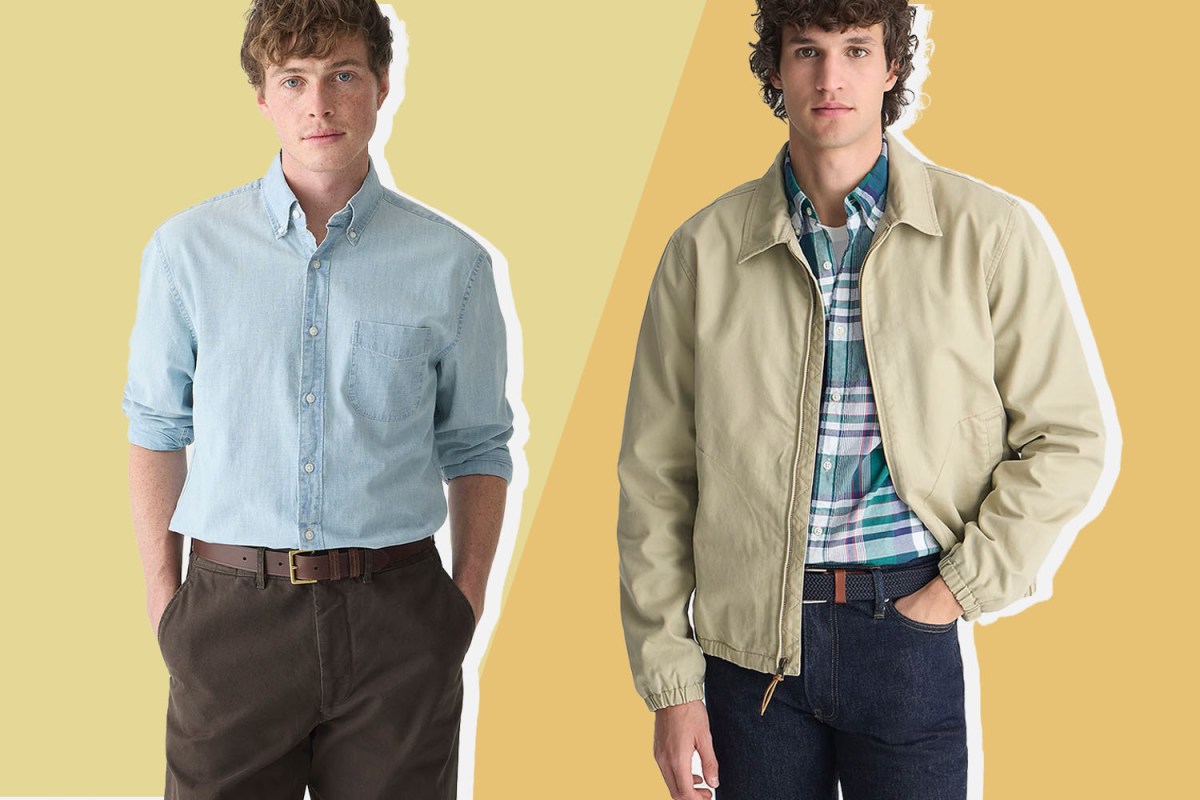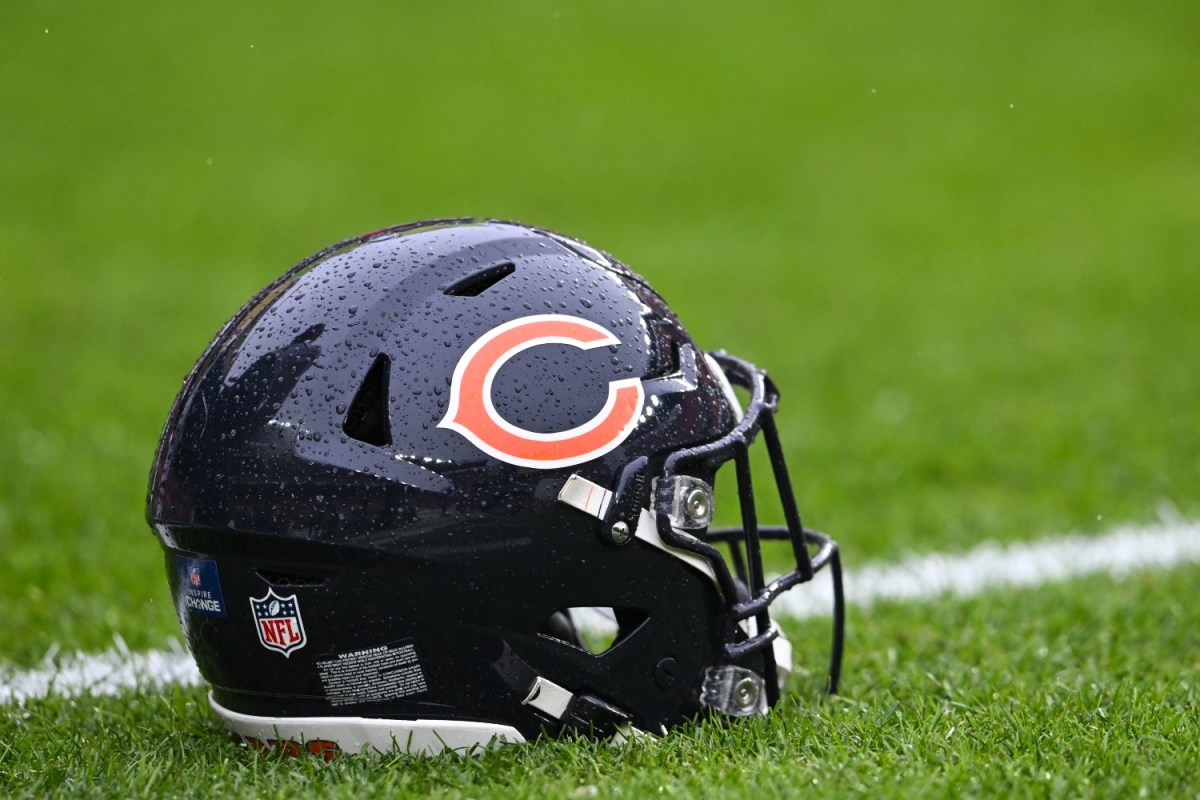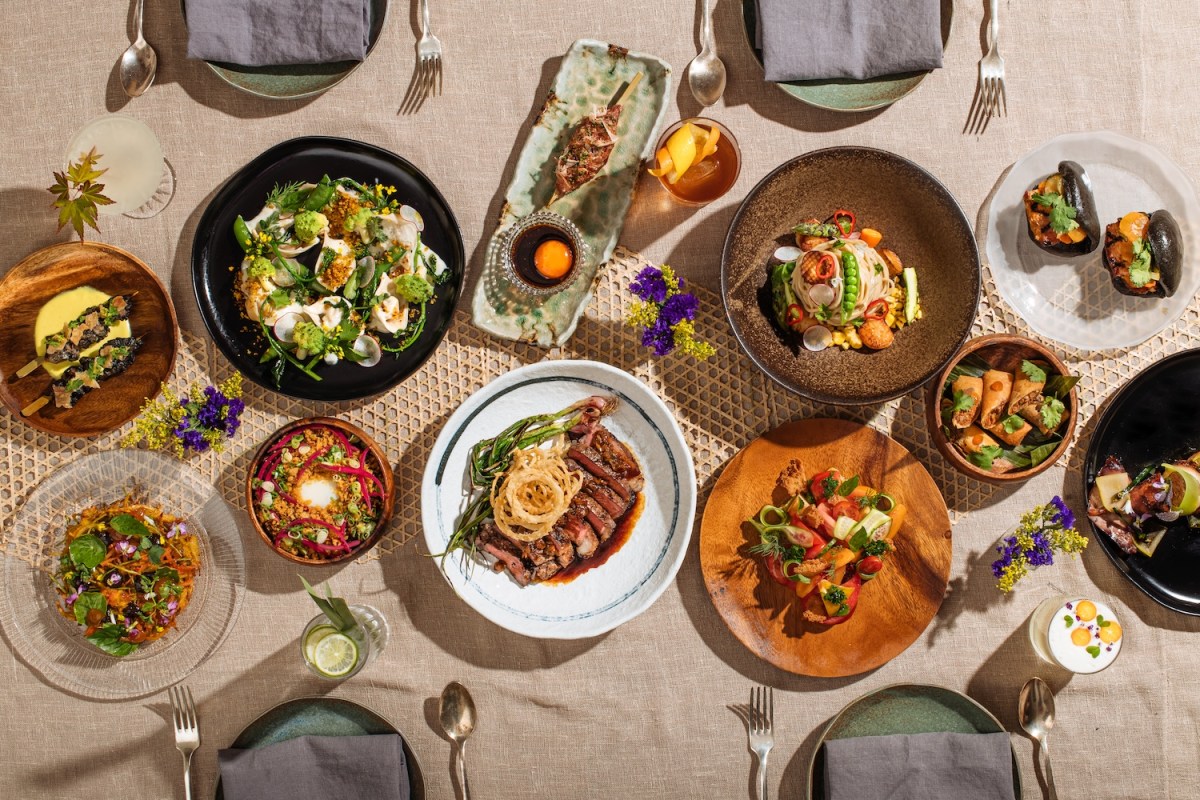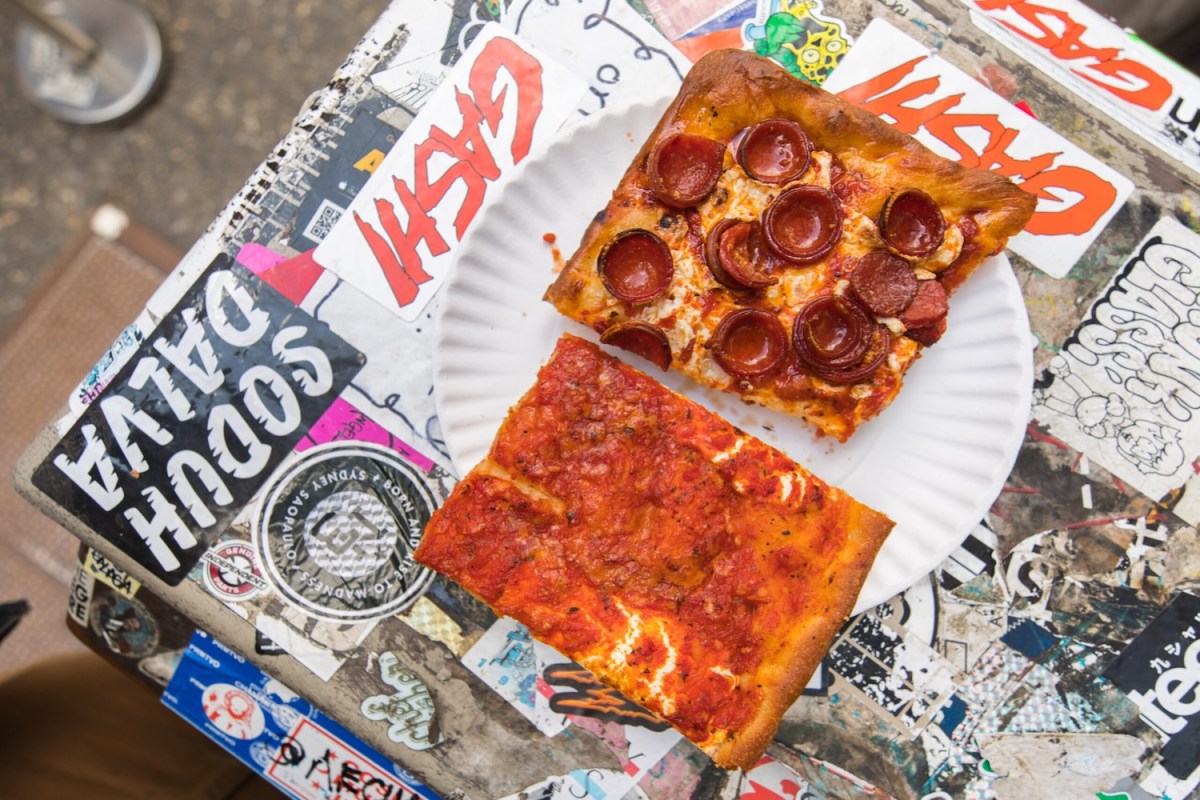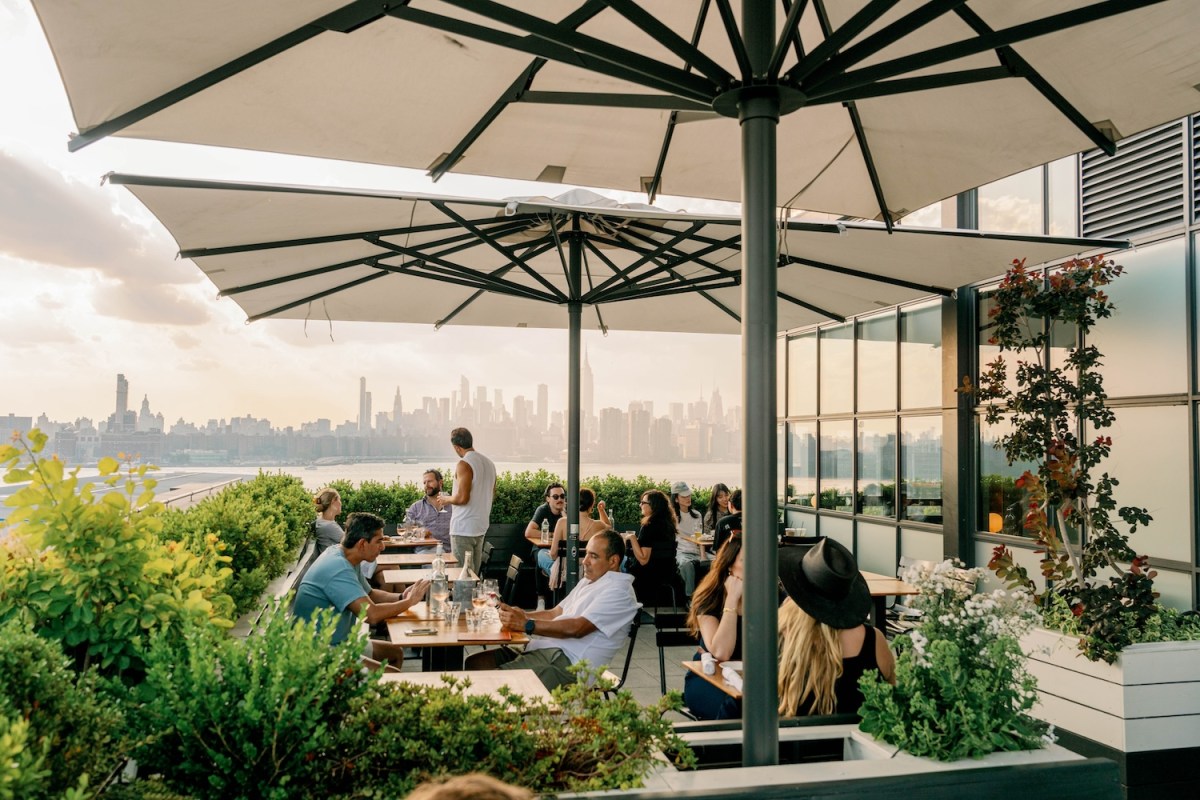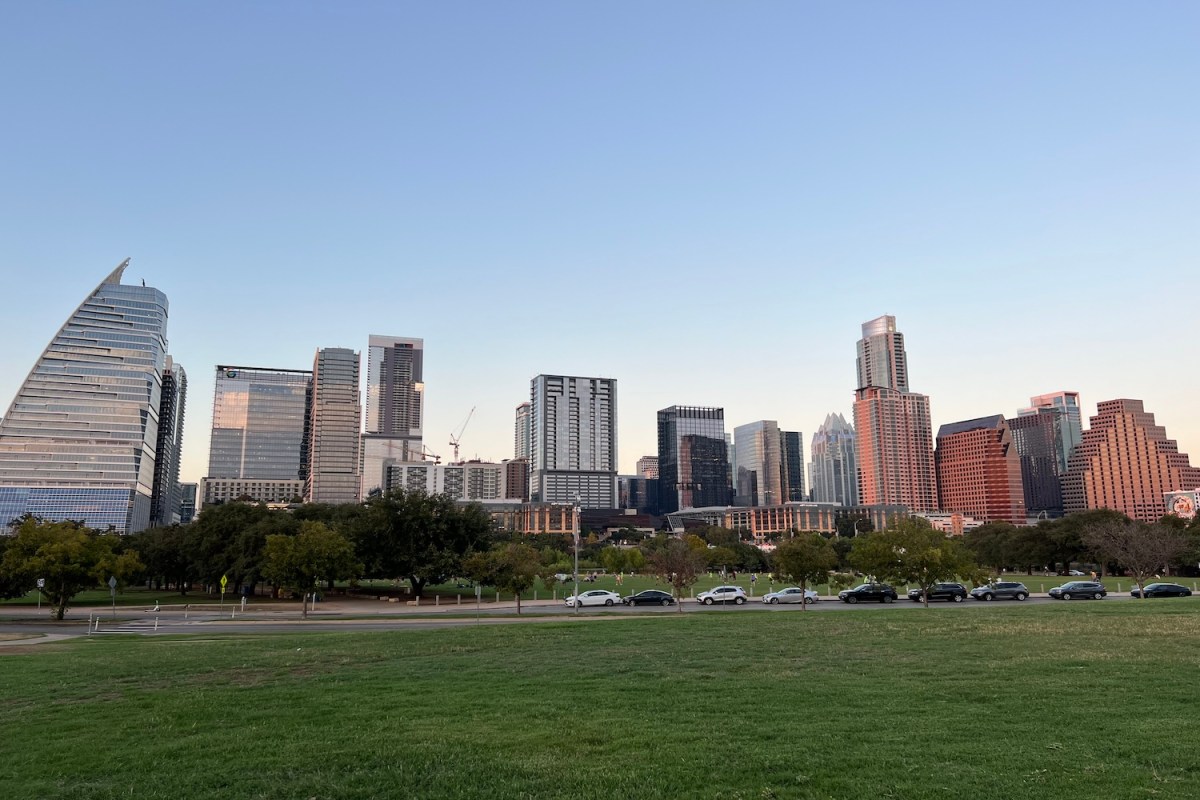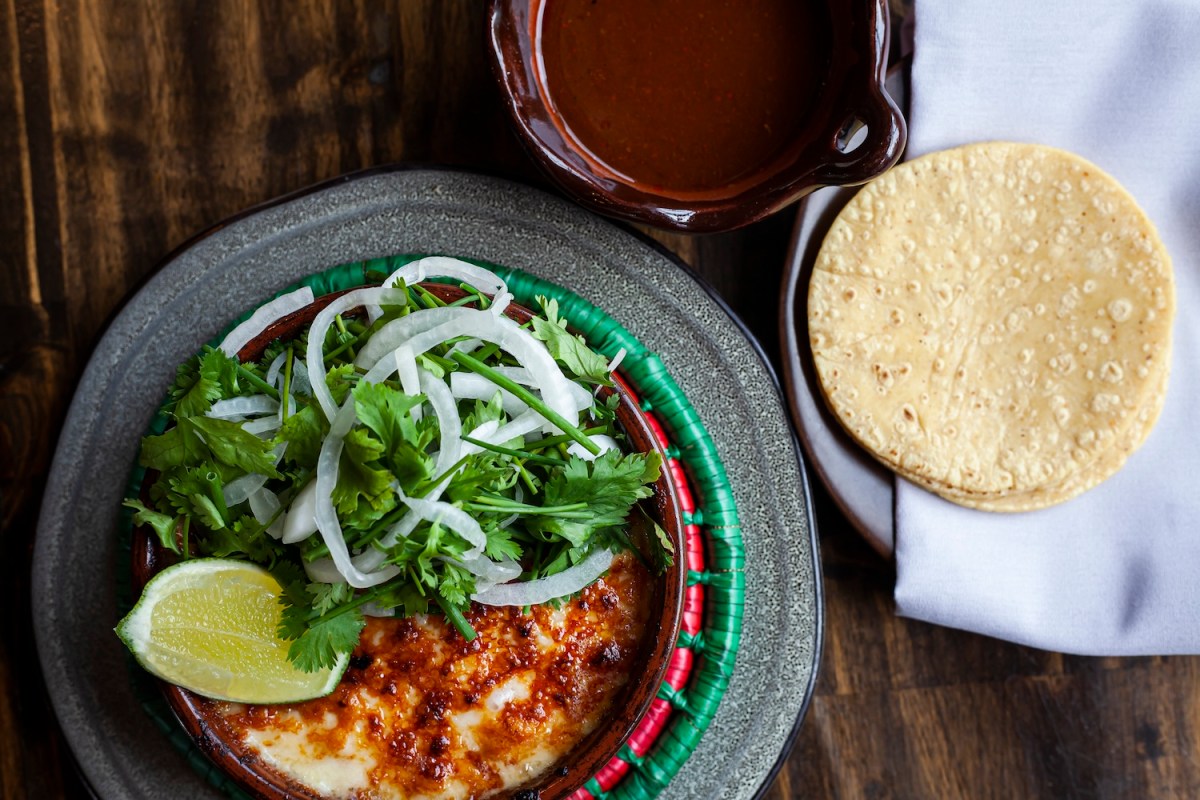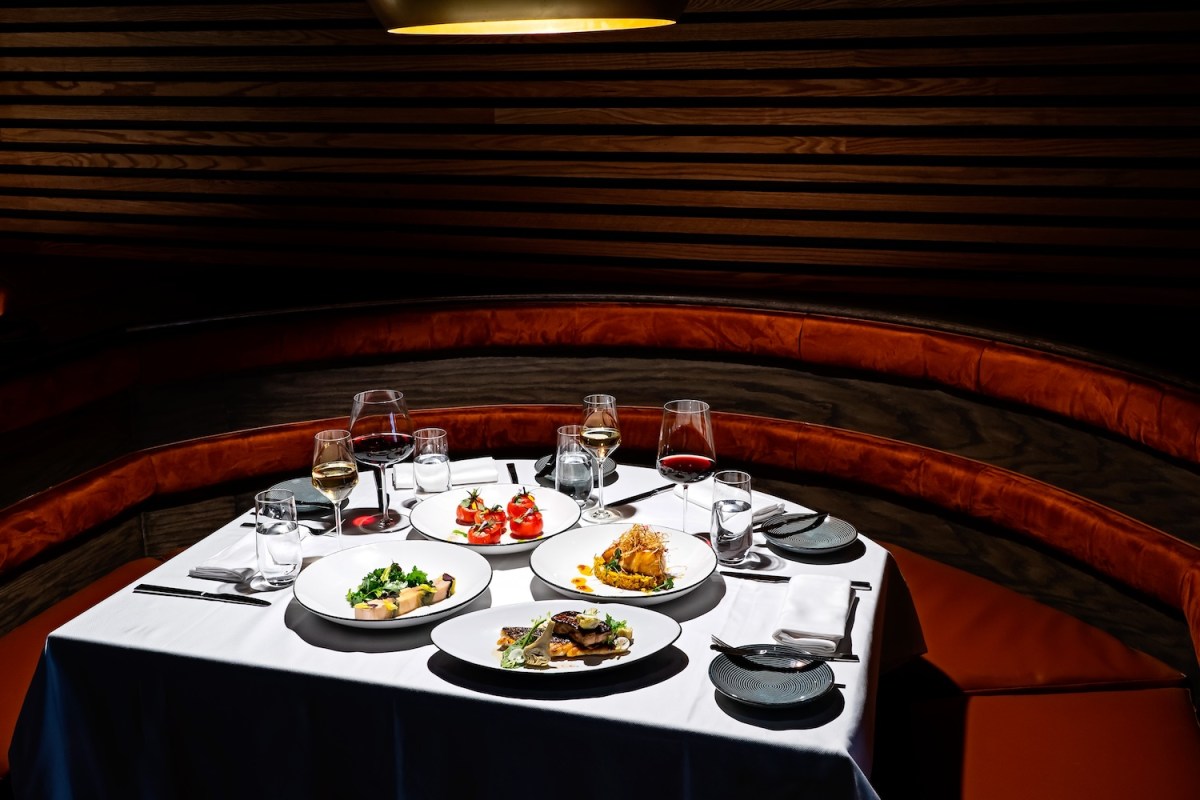“The trail puts a hook in you. You never feel it happening, and you don’t know exactly when the hook gets set. But set it is, hard. And you can’t shake it. You don’t want to shake it. You just want to get back to it. It’s like a hole in you yearning to be filled once you are gone and back to civilization. It’s what you think about for weeks. No matter how hard the trek was, no matter what you endured, no matter how many times during the trek you swore you were done, cured and over it, you’re not. You never will be. It’s in your head forever.
It can’t really be explained to someone that hasn’t experienced it. It isn’t the hiking, the camaraderie, the physical exertion, the rush, the fear, the anxiety, the views, the space, or the air. It’s all of that, and none of that, and more. To those that have experienced it, they know exactly, without explanation, what you feel. They feel it too, and can’t explain it any better than you can. It’s why they’re going back just like you are. One last time you say, and you know it’s a lie when you say it.”
Keith Lamparter
Introduction and Back Story
Overall Route Map and Description
Day 1 - Torrey Creek Trailhead to Upper Phillips Lake
Monday, August 14, 2017 Total Miles:11.42 Time on Trail: 11 h 54 m Beg. Elev.: 7,566 End Elev.: 10.115 Min. Elev.: 7,523 Max Elevation: 10,896
Our day begins early at the Twin Pines Lodge in Dubois. We had fun the night before at the Outlaw Saloon playing pool, drinking and meeting the locals. But today we are up at 5 am and on the road by 6. It’s about a 1/2 hour drive to the trailhead. We are on the trail by 7:30. The day is cloudy and cool. We take the Glacier Trail, which begins with an immediate climb up the hill to Torrey Creek. We cross Torrey Creek on a nice bridge where the creek comes down a very narrow gorge in the rocks. From there we begin a slow, gradual climb over rocky terrain. After a few miles the trail crosses large meadows alongside Torrey Creek. We have a nice view into Bomber Basin, so called because a B-24 bomber crashed here in 1943. At about 3-1/2 to 4 miles in we begin a long series of steep switchbacks that take us to the high plateau that leads to Arrow Pass. I am not struggling as much as I did last year, the lighter pack and better conditioning I suspect, but the climb is still difficult and long.
At about the 7-mile mark we reach the top of the switchbacks and I notice that the distances listed in the trail guides and on Google Earth are not matching the distances my phone’s GPS app is recording. Each way-point we have reached is further than the calculated distances according to my phone app. At this point we have hiked a mile further to reach this point than either the guides or Google Earth calculated. Although we have reached the plateau the climb up continues and it has taken us longer to reach this point than we planned.
We are nearing Williamson Corrals and decide to stop in a grove of pines along the creek for lunch. Shawn drops his canister of bear spray and the cap pops off. He is using his knife to get the cap back on when the canister discharges hitting him in the face with pepper spray. At first we don’t understand what has happened, but quickly realize we might be in a very bad situation. Shawn buries his head in the cold water of the creek to wash out his eyes and face for the next ½-hour. The pain was intense and he was shaking visibly. The fact that he was able to not only endure it but continue on with the day’s hike is a tribute to his ability to withstand pain.
Back on the trail after a long delay, we have a long way to go to tonight’s planned camp at Double Lake. We pass Williamson Corrals where an outfitter has let his horses loose to feed in the grass. The trail is wet from the rain yesterday and for the past two weeks, and the horses of the outfitters have pounded much of the trail into a muddy mess making it even slower going that it would be normally. We finally reach Arrow Pass, having climbed 3,330 vertical feet from the trailhead, and begin our downward descent. We cross a long expanse of open country, marshy, wet and muddy. After a mile or more of this open country the trail now takes us down into a forest of burned pine trees. Wildflowers are thick here as we descend towards Phillips Lake. It has not rained today but the sky is getting darker and the clouds thicker. Our day’s plan called for us to reach Double Lake after 10 miles of hiking, but we have already hiked over 11 miles to this point and there is still a mile or more to Double Lake. So we decide to call it a day on the outflow creek from Phillips Lake. Mosquitoes here are horrible and are coming after us in literal clouds of bugs. We are putting the mosquito repellent to good use and it seems to work quite well.
Shawn starts a fire, Dan and I set up tents and Melissa and Ashley and Shawn begin getting our meals ready. Melissa and I make some hot coffee and add some of the whiskey we brought with us to it. That hits the spot. Everyone seems to be having a good time, and is figuring out their roles and the routine of unpacking and organizing and how everything works. After dinner and hanging our food containers in a tree, we call it a night early. Everyone is beat.
Day 2 - Upper Phillips Lake to the Glacier Trail-Ink Wells Trail Junction
Tuesday, August 15, 2017 Total Miles:10.13 Time on Trail: 8 h 9 m Beg. Elev.: 10,115 End Elev.: 9,554 Min. Elev.: 9,150 Max Elevation: 10,335
It rained most of the night but had stopped by morning. Everyone’s boots had gotten quite wet yesterday and they were still wet this morning. A number of trekkers have walked by our camp this morning on the way down the trail back to the trailhead. Several groups looked to be climbers that had attempted Gannett Peak. By the time we got things generally dried out, packed up, pictures taken and on the trail it was after 9:15 am. The trail started out slowly, descending to Double Lake which is where we had hoped to spend the previous night. The pictures don’t do it justice. It is a special jewel, quite beautiful. From there we started climbing gain until we reached our maximum elevation for the day above Honeymoon Lake. We follow a series of steep switchbacks down and then we follow Honeymoon Creek down the canyon shedding all of the elevation gained to this point until we reach some beautiful falls on Dinwoody Creek, which is actually a raging river. The Downs Fork and the Dinwoody have merged here and the amount and volume of water takes us by surprise. A storm blows up quickly and we don our rain gear. A steady rain falls and then turns into hail before ending as quickly as it started. We are steadily gaining elevation again as we traverse through forests and then along large alpine meadows that are extremely swampy and wet as we follow Downs Fork Creek. We have to make way twice for outfitters with horses and mules that are beating the trail into a muddy mess. In some places the trail has become a trench over a foot deep filled with water and mud and we have to pick our way along the edges. Although the ground is generally flat the hiking is tedious and slow as we are forced to constantly rock-hop and search for dry places to put our feet alongside the trail. We reach a nice bridge across the Downs Fork and stop to rest. The water here is turquoise blue and absolutely ice cold. I pull my boots and socks off and try soaking my feet but the water is so cold it is painful. Melissa has a very large, nasty blister popping up on her heal from wet socks. I bandage that and she changes into some dry socks. Ashley also has a small blister on her foot. We meet a nice man and his dog on the bridge. He is from Kansas City and has been high up on the Downs Fork in very remote country. He tells us we are the first people he has seen in 3 days. Soon after leaving the bridge we have to ford the creek again on fallen logs, and Melissa loses her footing and steps into the cold creek. So much for her bandage and dry socks. From the Downs Fork we begin following the Dinwoody again. More large alpine meadows, very wet and swampy, lots of mosquitoes and a wet muddy trail. We are forced to don our rain gear again as another storm with rain and hail comes up on us. We have been steadily gaining some elevation back for the past several hours. When we reach the Glacier Trail-Ink Wells Trail junction we cross a small bridge across the Dinwoody and another large storm is bearing down on us. As with yesterday, we had hoped to reach another camp further along the trail but we have already put in our planned 10 miles for the day and the weather is turning bad on us. We don’t have much time to pick our spots so we throw our tents up just outside the outfitter camp on some grassy, dry ground. The rain hits hard before our tents are all the way up. After the rain passes Melissa talks to one of the wranglers from the outfitter camp who invites her down to their camp later. Just before dark some Navy Seals that are at the outfitter camp come down to our tents and invite us for drinks and a campfire. I know they are there because with have two cute girls on our team so Dan and I stay in our camp and rest. Shawn, Melissa and Ashely take them up on their offer. I believe a good time was had by all.Day 3 - Glacier Trail-Ink Wells Trail Junction to Lake 11060 in Dry Creek Drainage
Wednesday, August 16, 2017 Total Miles:11.16 Time on Trail: 10 h 21 m Beg. Elev.: 9,554 End Elev.: 11,060 Min. Elev.: 9,554 Max Elevation: 12,178
The outfitters had turned out their herd of horses and mules to feed in the meadow last night so we woke up very early to the sounds of hoofs and the bells on the mule’s necks as the herd made its way back to their corral at daylight. When we crawled out of our tents there was a layer of ice on our tents and gear and the grass was coated in a hard frost. With the mountains behind us to the east the sun did not shine on us directly until late in the morning. The good news was the cold seemed to have put the mosquitoes into hibernation and we weren’t bothered at all for the first time this trip. Once we were packed and on the trail we started climbing immediately and I don’t think we stopped climbing for the next 9 hours. I knew this was going to be a hard day, but I honestly was not prepared for what we encountered and had to endure this day. We started by following the Ink Wells Trail east into some very pretty country. Some of the locals in Dubois had told us this was a very pretty stretch and one guy had shown us arrowheads and tools he had collected. Evidently this area was part of a very large, high altitude American Indian community thousands of years ago. It was indeed gorgeous. We had originally hoped to get a few miles further up the trail yesterday for camp so that was strike one against us today. Then, the route up Horse Ridge that I had planned on using looked much steeper and rockier than I had been led to believe so we opted to go further up the Ink Wells Trail for an easier access point. These two items added several extra miles to our day which translated to several extra hours on the trail. Once we reached our access point to Horse Ridge we left the Ink Wells trail and headed west. We would be off-trail for the next 4 days. The initial route up Horse Ridge was very much what I had imagined, a very long, steep climb up grass and rock covered slopes. We reached an overlook into Dry Creek Basin where we could see many lakes below and Cold Springs Trailhead in the distance to the east. From there we continued to climb, and climb and climb for the rest of the afternoon. The ridge became increasingly rocky and areas that showed as relatively flat or level on the topo maps were in reality boulder piles and rock strewn ridges that forced us to alter our intended route. We also encountered a great deal of snow from this past winter that we had to detour around. The mileage to this point was much longer and our progress much slower than planned. As a result we found ourselves exposed on the ridge at high altitude much later into the afternoon than we had planned. I was worried about a storm blowing up while we were exposed like this but the gods smiled on us this day. Storm clouds came in from the west, it got colder and darker, but thankfully no rain as the clouds drifted off to the east. The girls spotted a small herd of elk while we were high up on Horse Ridge but the herd ran as soon as we saw them and disappeared. Elk and bighorn sheep droppings are everywhere on the ridge. We finally reached 12,200 feet which marked the summit point for us where we could begin our descent. But once again the route was much rockier that we had planned on. We also ran out of water before reaching our summit point. Fortunately, yesterday’s rain storms had left fresh pools of water in the rocky depressions for us. We slowly picked our way down the ridge, unsure of the correct path to take, until we reached our intended exit point down into the valley below. But there we found our path once again blocked by snow banks. So once again we began altering our route looking for ways around and down to the bottom. Today was supposed to be 7.1 miles of hiking but we had already done 10 miles to this point. We were all extremely tired, and it was clear we would not be able to reach our intended camp at Don’s or Cub Lakes for the night. So we searched out an alternate location to spend the night. We found a very pretty lake at 11,060 ft. where we called it a day and pitched camp. Bighorn sheep and elk droppings were everywhere on the ground. We ended up doing 11.16 miles for the day. The views and scenery were spectacular. Better than I think anyone had imagined. But the effort was much greater than we had planned. I was absolutely dead tired and, once camp was set up, I crawled into my sleeping bag, too tired to even eat.Day 4 - Lake at 11060 Below Horse Ridge in Dry Creek Drainage to Lake 10530 West of Don's Lake
Thursday, August 17 2017 Total Miles: 5.81 Time on Trail: 4 h 8 m Beg. Elev.: 11,060 End Elev.: 10,530 Min. Elev.: 9,911 Max Elevation: 11,112
I had planned on a very cold night last night as we were well over a 1,000 feet higher in elevation than our previous camp, but we did not have the ice and freezing temps I had expected. We also had a pleasant break from the ever present swarms of mosquitoes we had encountered up to this point. The sun broke on our camp earlier than yesterday as we didn’t have the peaks to the east of us which was also nice. Our schedule called for us to go over E. Indian Pass today, but we were still several miles short of Don’s Lake, and the first three days were much harder than we had planned. So we made the decision last night that today would be a rest and relax day with only a short hike to the next camp. We are hoping to make up the time on Day 7 and 8. We lounged around in camp until 10:30 am enjoying the sunshine since we knew only had a short hike ahead. Once we were packed and on our way we made the first of several navigation errors today that really set us back more than we realized at the time. First thing in the morning Shawn took the lead and led the team over the ridge and down a long valley that headed us southeast, but we need to be heading southwest. By the time we gathered up and discussed our error it would have been a difficult climb to regain lost elevation and get us headed in the correct direction. So we bit the bullet and followed the valley down the hill, knowing it would intersect with the Dry Creek Trail to Don’s Lake Trail coming in from the east. The valley we were travelling down was very nice, lots of grass and shade, not too rocky and very pretty. We followed a number of game trails and natural pathways on the way down and it was an easy descent. We reached the trail to Don’s Lake at Moose Lake where we took a brief rest. From there we began climbing again as we headed west towards Don’s and Cub Lakes. We reached a junction in the trail that was not indicated on our topo maps and here we made our second navigation error of the day. We decided to follow the fork to the right as it had fresh horse droppings from outfitters and we assumed this would lead us to Cub Lake where we hoped to camp. However this fork took us to the northeast side of Don’s lake and we had to route-find again and go cross country back towards the south and cross the outflow creek trying to get to the other side. We reached the trail again and here is where we made mistake number 3 on the day. If we turn left here it takes us a short distance back to a nice campsite on Cub Lake. But we turn right and follow the trail to Lake 10530 west of Don’s Lake. A pretty spot, but the fishing was poor and it took us several miles in the wrong direction that we had to retrace the next day. Since our hiking time was short we spent the afternoon fishing and, more importantly washing our bodies and clothes. At this point in the hike we all smelled pretty bad, especially our socks. So we washed ourselves and our clothes and hung our clothes in tree branches to dry in the breeze. Which worked pretty good for the most part, but our socks refused to dry. We ended up building a fire late in the afternoon and that evening trying to use that to dry our socks the rest of the way. Our socks smelled like campfire for the rest of the trip. Melissa did hook a nice trout late in the afternoon but lost it at the bank. We had our hearts set on some fresh trout at this point as we were quickly losing our taste for the freeze dried food we packed in. Unfortunately, that was our sole bite and we were skunked the rest of the afternoon. The mosquitoes were biting though and were back with a vengeance at this campsite. We all hit the tents and sleeping bags early tonight.DAY 5 - Lake 10530 West of Don's Lake Over E. Indian Pass to Glacier Panorama
Friday, August 18, 2017 Total Miles: 9.66 Time on Trail: 9 h 38 m Beg. Elev.: 10,530 End Elev.: 10,840 Min. Elev.: 10,312 Max Elevation: 11,542
Once again the night was cold. Not as bad as night 2, but plenty of frost to go around. We were on the trail by 8:00 am today, our earliest start of the trip since Day 1. A good thing as we were on the trail for 9-1/2 hours today. We hiked back to the east on the trail to Cub Lake covering the same mile and a half we hiked in yesterday. Just before we reached Cub Lake we met three campers who told us they had a black bear come into their camp twice the night before after their food. They had hung their food in the trees right by their tents, which I thought was stupid, but said nothing. Soon after we reached Cub Lake, which was teaming with big fat trout that could be seen as we walked along the bank, and had a really nice camping spot where the sun would hit it early in the morning. I was really upset with myself when I realized the mistakes we had made yesterday and how we could have camped here and had fresh trout for dinner and had a couple of miles less to hike today. But the damage was done. Lessons learned for next time. We started a small climb out of Cub Lake up to the ridge above the lake. Harder than I had anticipated, but it was over soon and we started down the hill towards Zip and Zap Lakes. We were off-trail once again and route-finding our way. We followed a number of game trails, and came to an area where a bear had ripped apart a hollow log where the squirrels had hidden their pine nuts inside. I should have taken a picture. Makes you think about what that bear could do to your camp or your tent or you when you see that. We passed some beautiful ponds and un-named lakes and then arrived at Zip and Zap Lakes sooner than I had expected. Before I realized it, we were at Rock Lake where we would begin the climb to East Indian Pass. The day was going quicker than planned to this point. We could have made it here easily yesterday and saved ourselves a lot of travel time today. Saving that to the file for next time. From Rock Lake we began a steep climb of just under 1,000 vertical feet up to East Indian Pass. The climb reminded me a lot of Washakie Pass last year. Lots of rocks and boulders to pick our way around and through and over with no trail to follow. We tried our best to stay on what grassy or tundra areas we could find but mostly lots and lots and lots or rocks and boulders with a few patches of un-melted snow. We saw a large heard of bighorn sheep crossing the snow above us near the pass but could not get pictures because of the distance and because once they are off the snow they blend into the rocks and disappear. Again, like last year, wild flowers are everywhere together with a strange tundra I don’t recall from last year. It’s like a spongy green mat with tiny yellow and red flowers sprouting out of it. After a hard climb of just under 2 hours from Rock Lake we reached E. Indian Pass and the views were incredible. I had seen pictures by others, but this was amazing, much more impressive than I expected. The enormous valleys on the other side are full of raging rivers, snow, glaciers and amazing peaks. It felt like we had discovered another planet. After we rested and took pictures we started thinking about how to get down the 850 vertical feet to the lake below at 10,750 ft. I had been warned about how steep the pass was going down, but it was more than I bargained for. The first 50-100 feet seemed to be straight down. Shawn took one route and I took another and once over the initial fear and intimidation we settled in. We quickly learned to use our feet like snowboards and slide down the loose rock and gravel. It was a long, slow and tedious descent. Somewhere past the half way point we had to work our way over to the right through a rock field to another slide area that was not so steep and the going got a bit easier. Once at the bottom we encountered the same problems that dogged us on Horse Ridge, rock and boulder piles, climbs that we did not anticipate, and lots of un-melted snow fields that we had to cross. We grew very tired and were in a foul mood until we reached a huge, tundra and grass meadow at Glacier Panorama that would be our camp for the night. It is hard to describe the beauty and total isolation we found ourselves in. Directly across the creek were multiple peaks exceeding 13,500 ft., glaciers and an untold number of snow fields. And yet we were totally and completely alone here with not a campfire, tent or sound of another person. We had seen no-one since 8:30 am and only 2 groups totaling 8 people since Tuesday morning three days ago.Day 6 - Glacier Panorama Over Knifepoint Glacier Over Indian Pass to Indian Basin
Saturday, August 19, 2017 Total Miles: 9.55 Time on Trail: 8 h 47 m Beg. Elev.: 10,840 End Elev.: 11,007 Min. Elev.: 10,512 Max Elevation: 12,133
I like the isolation we wake up to. In this incredible place, untold acres, miles upon miles of space, and we are the only ones here. Not a campfire, tent, or sign of another human being. I love it. I lay in my tent waiting for the sun to get up over the peaks to shine on us before climbing out into the cold air. We are camped at the headwaters of the North Fork of Bull Lake Creek. Where I am from they call this a river, here it is a creek. It is fed by six glaciers directly to our west. It is late August and we are surrounded by snow, 13,500 ft. peaks and a half dozen glaciers. It doesn’t seem real. Even better news, very few mosquitoes here to bother us. We pack up and begin hiking southeast down NFBLC looking for a place to ford. The scenery here is amazing. We reach a likely spot to ford but the water is high so we take off our boots and don sandals or bare feet and wade across. My feet feel wonderful in the cold water. Once our boots are back on we begin the climb up Panorama Pass. On the other side of that pass is Knifepoint Creek and Knifepoint Glacier. The climb up Panorama Pass is a nice, gradual climb and then an easy run along the two lakes at the summit. Very pretty up here and not as rocky or steep as I had feared. The Shangri La Lakes can be seen in the valley across from us. We reach Knifepoint Creek and begin climbing up the valley looking for a place to cross. The creek is running high and we don’t want to risk falling in, too dangerous here. Once we ford Knifepoint Creek we begin looking for landmarks for the correct route to Knifepoint Glacier. I have been dreading this Knifepoint Glacier crossing since Day 1. People that have made the crossing have convinced me we will be ok and not need crampons or micro-spikes, but they were all going down the glacier and we are going up. And this has been an abnormally heavy snow year. I worry more about what I may have gotten the others into than about what I have gotten myself into. There is a brief disagreement on our route up the hill. I know the route but it is hard to match the map on my phone to the features we are seeing at times. I have learned to keep a hard check on Shawn to keep him going in the right direction. He is such a strong hiker he gets way out ahead of me and then we don’t realize the mistake until it’s too late. I don’t want a repeat of the mistakes we made descending Horse Ridge and trying to reach Cub Lake. As we climb higher we are permanently on snow for the duration to the pass. The snow acts like a large sun reflector. I am on snow at 11,500 ft. in shorts and a t-shirt and I am being roasted and burned. I am coating my face and arms with sunscreen and praying for a breeze to cool me down. Dan sticks with me as we near the glacier but Shawn heads down the hill to get off the snow. Ashley and Melissa follow him but rocks and meltwater halt their route. They must climb out a steep section to catch back up. A large herd of bighorn sheep crosses the glacier in front of us. I get some pictures this time. We spot another pair of trekkers making their way down the glacier and we pass each other at the midpoint. From then on I walk in their steps as much as possible. The snow on the glacier is mushy during the heat of the day but it is still slippery and the steepness and angle is increasing. As I near the top shadows have started covering parts of the glacier and where the shadows hit the snow it freezes quickly. I slip and fall twice, once thinking I am taking a quick slide all the way back to the bottom. I stop my slide by jamming my trekking pole into the snow. I rest on a rock short of the top and wait for Dan. When he arrives Melissa is hot on his heels and she passes us both and heads for the top. When we reach Indian Pass the exhilaration gets the better of us and we literally scream with relief. The wind is blowing hard at the top and we rest behind a wall of rocks and a boulder. On the other side of Indian Pass we are back on trails and the hard route finding and climbing are over. We are really tired, emotionally drained. We search for a camp but the basin is crowded with trekkers that have come up for the eclipse. Our solitude is over. We end up sharing a site along the trail with a group of trekkers that will be going over Indian Pass tomorrow.Day 7 - Indian Basin to Titcomb Basin to Hobbs Lake on the Seneca Lake Trail
Sunday, August 20, 2017 Total Miles:12.03 Time on Trail: 7 h 58 m Beg. Elev.: 11,010 End Elev.: 10,033 Min. Elev.: 9,925 Max Elevation: 11,010
Camping space was at a premium last night and people are on the trail at daybreak. We have seen maybe two dozen people in total the past 6 days, and here we struggled to find a campsite and ended up sharing one with some other trekkers. It’s a beautiful day but cold so we don’t start hiking until almost 9 am. The trail down the hill to Titcomb Basin and Island Lake is easy to us and we make fast time. I am excited because I have dry socks for the first time in several days. When we reach the junction to the Titcomb Basin Trail we are not prepared for the masses of people we encounter. It seems more like a city park than the Bridger Wilderness. People have come to see the total eclipse by the hundreds. We drop our packs by a large boulder just off the trail and hike into Titcomb. It is about 4 miles round trip in an out. I am concerned about the mileage we need to make today to reach Green River Lakes tomorrow. This adds 4 miles onto our total plus the 2 miles we are already behind. But I promised Melissa we would see Titcomb so I don’t complain or voice my concerns. The hike into Titcomb is relatively easy and flat. Wetter than I thought it would be, but this whole trip has been wetter than I thought it would be. The views are spectacular. I can see why this is considered one of the two best places to visit in the Winds, but having seen Glacier Panorama and NFBLC, Horse Ridge and both Indian Passes, I am sure it isn’t the best place we have seen. We take our pictures and hike back out, pick up our packs and head down the trail. Island Lake is as pretty as all the pictures I have seen. We hike around the lake and take what we believe to be a short-cut to the Highline Trail, freelancing again to save a mile in distance. As we approach the Highline Trail it is clear we can’t make Green River Lakes Trailhead at a reasonable hour tomorrow. The hike will be a death march and we will stagger out just before dark. I have decided we need to bail out to Elkhart Park but don’t break the news until we reach the Highline Trail. When I drop the news we are bailing to Elkhart the mood picks up immediately. The whole team is chattering again, the pace has picked up and I sense something bordering on joy. Melissa was ready to bail to Elkhart yesterday, but even Shawn displays no disappointment. Everyone just wants to be done now. We have checked all the bucket list boxes and seen all the best things we came to see. All that’s left is getting home, a shower, beer and burgers. So I send the help message on our Spot GPS and hope Monica (my wife) can coordinate with Randy Williams in Pinedale to move our car from Green River Lakes to Elhart. The map showed what looked to be a quick shot down the hill, but even as fast as we are moving I realize that we still have a long way to go. As we go down the hill I continue to marvel at all the people streaming up the hill as we descend and notice that so many of them have brand new, very expensive, name brand hiking gear and clothes, and boots that look like they have never been worn and brand new expensive packs that look like they are stuffed to the breaking point. The two guys on horseback led by the outfitter are priceless, flopping around like they have never been on a horse before. Should have gotten their picture. As we passed Little Seneca Lake all I wanted to do was dive in for a swim. A beautiful place and its a very hot day, for the Winds anyway. All the lakes we pass are packed and we are worrying about finding a campsite. We stop to talk to two Forest Service guys doing trail maintenance and they suggest Hobbs Lake for tonight’s camp. So Hobbs it is. Although the trail is pretty easy and mostly downhill it is still a long hike to Hobbs Lake. I keep thinking it will be right around the next bend but there is always another bend and then another brief climb. At least we are moving like power hikers now, no breaks on the climbs up, no stopping, just powering through it. A good feeling, I remember this from last year. We reach Hobbs lake with several hours of daylight left. Campsites are limited but we wedge in close to the lake on a small patch of almost flat and mostly dry ground. We swim, wash, fish and relax away the rest of the day. A good way to end it. We eat good and hit the hay early. Our chatter has become about burgers, beer and a shower in Pinedale. Its a good vibe.Day 8 - Hobbs Lake Via the Pole Creek Trail to Elkhart Park Trailhead
Monday, August 21, 2017 Total Miles: 7.41 Time on Trail: 3 h 2 m Beg. Elev.: 9,925 End Elev.: 9,331 Min. Elev.: 9,331 Max Elevation: 10,331
When we wake up we find that the steady stream of people up and down the hill continues. We are going to watch the eclipse from camp and totality doesn’t start until 11:30 am, so no rush for us. We have a good breakfast, doctor our wounds and pack things up. The blister on the back of Melissa’s foot refuses to heal and is bigger each day as a result of constantly wet socks and boots. We have used up most of our bandages and all of our medical tape so we improvise. Black duct tape replaces the medical tape and it looks like it will keep her going until we can get back to the trailhead. The morning started very cloudy and we all thought the clouds would hide the eclipse, but by 10 am it is clear and sunny. The eclipse starts around 10:30 am. We all have eclipse viewing glasses that we bought on our way up from Salt Lake so we relax, sit back and enjoy the show. It is progressing much more slowly than I thought. Even when it reaches 2/3 to 3/4 eclipse it is not really darker where we are. But it is getting colder. As the eclipse nears totality it has gotten darker, and noticeably colder. And then, finally, suddenly, the sun disappears and things are surreal. While it is not pitch black, the stars and planets are definitely visible. And the corona around the sun is incredible. Much better than we had expected. People on the hills and in the campsites are howling and cheering and we can’t help howling and cheering along. And then, just like that, it’s over, and over way too soon. It’s light again. It takes us a bit to regroup. Not sure how to describe what we saw and experienced. But it was better than we thought it would be. We pull on our packs, hit the trail, and down the hill we go. Everyone is moving fast. We just want to be done. The trail is downhill mostly, but we ascend to a high point briefly and Shawn’s phone gets signal. I use his phone to call Monica. She got ahold of Randy who will meet us at Elkhart Park, but he can’t get our car because I had him lock the spare key inside. Duh!! But at least we have a ride. We can figure it our from there. We agree we will call again at Photographers Point. It’s about 2-hrs. from Photographers Point to the trailhead. We reach Photographer’s Point on the trail out and take the obligatory pictures. It is a great spot for pics, but I sense nobody cares all that much. But I know the photos will mean a lot later on after this is over, so we get pics of everyone, make our call, and tell Monica we will be a the trailhead in an hour and 45 minutes. And then down the hill we go again. My left foot is killing me as we descend, every rock I step on causes a sharp pain in my foot. I need to stop and take my boot off and rest a bit, but I am thinking we are almost there so why waste time. In the fifteen minutes it will take me to drop my pack and fix my boot and get my pack back on we could be to Elkhart. So on we go, not stopping for anything. We cover almost 7-1/2 miles in 3 hours. That’s really fast with 40+ pound packs and 7-days and 70-miles of hiking already under your belt. When we reach Elkhart it’s about 2:45 pm. Randy Williams is there and bless his soul he has cold beer, Gatorade, snacks and Redbull for us. Randy takes us back to his house where we shower and rest for a wile while he and his Dad go to ferry our car from Green River Lakes, about a 2-hr. round trip. His wife Cindy lends us their spare car and we go to Los Cabos, a local eatery for margaritas, beer, and food. It has been a long day and a longer adventure. But everyone is sky high. We did good. This last day was an awesome way to end things. Once we hit the hotel and changed clothes I thought the youngsters would be out ’till all hours celebrating, but everyone is in bed before 11 pm. Except me of course. I pass out at 9 pm and I’m wide awake again at 11 pm. I toss and turn just like I did most nights on the trail. Finally, since I can’t sleep, I do laundry until 3 AM. At which point I pass out again and sleep until almost 7 am. At least we will all have clean clothes tomorrow and won’t stink on the way down the hill to Salt Lake City airport. Wish we had more time to relax and decompress like last year. Oh, well, more lessons learned. But a good trip. Success. Victory.

